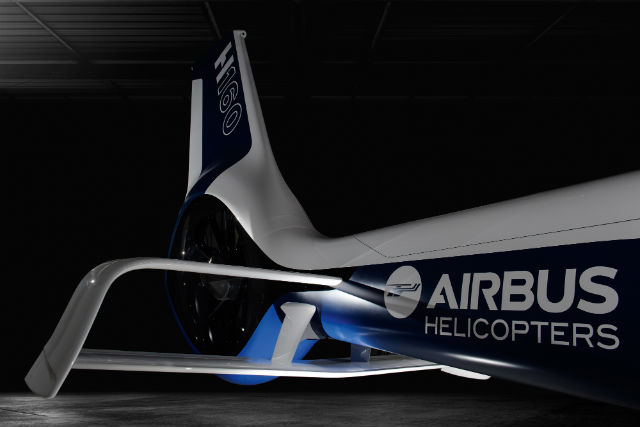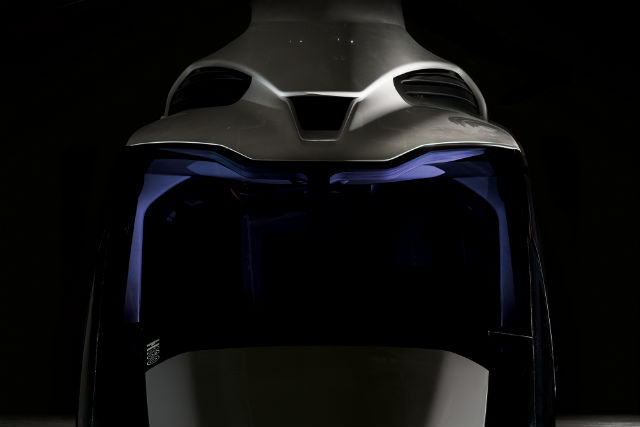The H160, says Aurélie Gensolen, marketing manager at Airbus Helicopters, is the first of the “H generation”.
It may lack the high-tech gadgetry and distinctive look of the original X4 concept studies, but Gensolen insists that the airframer has not shied away from using cutting-edge technologies, where appropriate.
“All these innovations are not for the sake of innovation itself, but to provide added value to the customer,” she says.
For instance, the canted Fenestron is both quieter than a normal tail rotor and provides lift equivalent to 88lb (40kg) of additional payload. The biplane stabiliser improves stability and performance, particularly at low speed, where another a payload gain equivalent to 40kg is seen.

Airbus Helicopters
Similarly, electrically actuated landing gear and brakes cut weight and increase simplicity over the hydraulic equivalents.
Improvements have been made under the skin too. The all-new gearbox features two completely independent lubrication circuits. One is the primary system and the second, which sits inside the ’box, effectively acts as the back-up.
“It is a strong improvement to what we have done in the past,” says Charles Louis, team leader for dynamic systems.
Because there is no emergency lubrication system, if there is a problem with the primary circuit the helicopter can continue to fly. Test runs have shown the gearbox is able to run for at least 5h using the back-up circuit “without any damage”.
Run-dry tests have also been conducted in excess of the 30min certification requirement, he says.

Airbus Helicopters
And for all the technology that is included, there is plenty that did not make the grade, the most high-profile casualty being the fly-by-wire control system.
But, says programme manager Bernard Fujarski, FBW controls were not deemed necessary because potential operators were not interested.
“They didn’t say absolutely that they wanted FBW controls. FBW for the benefit of doing what? If there’s a benefit, we will do it.
“The autopilot on Helionix is doing a lot of what we could achieve with FBW. It’s not like a fixed-wing aircraft where you would save a lot of kilograms – it would be marginally lighter but not significantly.”
Source: FlightGlobal.com






















